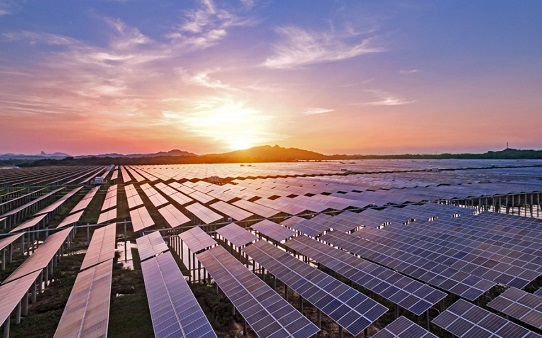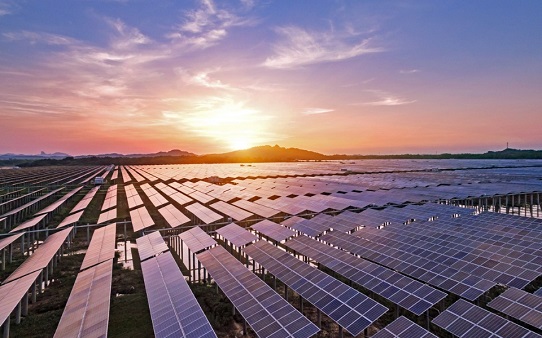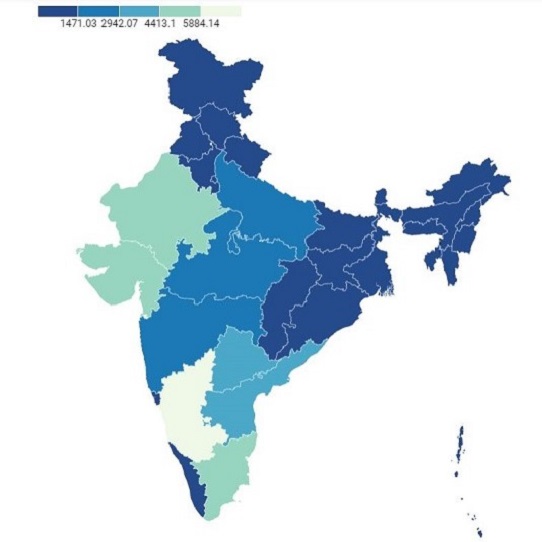
Report | India on path to meet renewable energy target in 2030, but hurdles remain

While solar is good, we need to think of what happens to the PV panels once they become useless at the end of 20-25 years of their service.
Source:THE FEDERAL
The climate summit at Glasgow (COP26) ended last week with promises — big and small. The representatives of 197 nations signed a mutually agreed document, called The Glasgow Pact, which should set the direction for how humanity tackles the most critical challenge it has ever faced.
Going forward, we shall look at four prominent and intricate subjects – renewable energy, coal, climate finance and adaptation – that were deliberated upon at the COP26 and give a perspective on each.
Part I:Renewables
Prime Minister Narendra Modi made two significant announcements at the climate summit in Glasgow (COP26):
· India will get its non-fossil energy capacity to 500 gigawatt (GW) by 2030
· The country will meet 50 per cent of its energy requirements from renewable energy by 2030.
The two promises may sound big, but in reality are just an extension of the commitments India made at the Paris Summit of 2015. Nevertheless, they are significant and have helped the country get a lot of international attention, which should eventually translate into much-needed funding for the rapidly expanding renewable energy market, especially solar.
In Paris, India had said it would generate 40 per cent of its installed energy capacity from non-fossil sources (solar, wind, hydro, biomass and nuclear) by 2030. Accordingly, the government revised and set an ambitious target of installing 450 GW of renewable energy (RE) by 2030.
In Glasgow, Modi revised the RE installation target for this decade from 450GW to 500GW, an 11% jump.
First, let’s have a look at the current RE scenario in India.
By 2022, the government aims to achieve RE installation target of 175 GW, which includes 100 GW of solar power.
State wise installed capacity for Solar Energy in India

Source:MNRE Get the data Created with Datawrapper
In August this year, the Ministry of New and Renewable Energy declared it has installed 100 GW of renewable energy capacity with additional 50 GW being installed and 27 GW in the tendering process. Add energy produced via large hydro projects, and the total installed RE capacity goes up to 146 GW. This means we are on course to achieve the 175 GW target by 2022, of course with challenges ahead.
The promises made at COP26 and the way forward
Much of the discussion at Glasgow revolved around efforts needed to limit earth’s temperature rise to 1.5 degrees Celsius of the pre-industrial levels by 2050 and strong steps each country should take in the coming decade (by 2030) to make it happen.
Since PM Modi promised that India will meet 50 per cent of its energy requirements from renewable sources by 2030, it becomes pertinent to look at how much energy we consume today and what would be the requirement in the coming decade.
The Central Electricity Authority’s Optimum Energy Mix report states that India’s power demand will be 817 GW in 2029-30. Of this, 522 GW is estimated to come from RE sources, which includes wind energy’s 140 GW and 280 GW of solar energy.
As of today, roughly 26% (100GW) of our energy requirement is fulfilled from renewables, according to Ministry of Power. Of course, this does not include hydel electricity. “To be able to meet the 2030 target of 50% from renewable energy, considering the demand stays at 817 GW, India needs to increase installed capacity from 500 GW to 700 GW,” says Samrat Sengupta, programme director, Climate Change and Energy at the Centre for Science and Environment, New Delhi.
If hydel power is added to it, RE installed capacity requirement will come down to 630 GW, which is achievable.
A power demand of 817 GW by 2030, minus the RE installed capacity of 500GW (as promised by Modi) leaves the electricity deficit at 317 GW. For records, India’s coal capacity by the end of this decade will be 266 GW. Therefore, renewables (500 GW) + coal (266GW) + hydel (70 GW) should help us meet or rather exceed our power requirement of 2030. All this while meeting our commitments under the Glasgow and Paris agreements.
Challenges ahead
The solar segment has the lion’s share of 60% (280GW) in India’s promise of 500GW by 2030. At the current pace, we need to install 25 GW of solar capacity every year. In the first six months of 2021, we added only 1GW of renewable energy capacity a month, states the Central Electricity Authority (CEA) data.
Part II: India’s coal ‘phase down’ call was all about climate justice
Of the target to install 175GW RE by 2022, 100GW has to come from solar — 40 GW rooftop solar and 60 GW ground-mounted utility scale. Till July this year, we have managed to install only 43.94 GW, the CEA data adds.
Secondly, our solar industry depends heavily on imports for solar panels, modules and other accessories, which have become costlier by 20% to 25% since the pandemic. Even before the pandemic (in 2019-20), India imported USD 2.5 billion worth of solar wafers, cells, modules, and inverters. Therefore, to meet its ambitious target, the Centre needs to boost domestic production of solar equipment.
Power distribution companies (discoms) in several states discourage solar net-metering (Difference between net-metering and gross-metering) for the fear of losing business and becoming financially unviable. India needs a uniform policy for purchasing solar electricity, which is in favour of the consumer and is investor-friendly, something on the lines of what PM Modi hinted at Glasgow.
Also read: COP26: India polishes its climate reputation at Glasgow
Additionally, several solar ground-mounted projects have run into rough weather due to opposition from local communities and environmentalists for their adverse impact on the local ecology. It would be good if the target for rooftop instalments is hiked from the present 40% to say 60%, considering that it would meet with no resistance. In fact, energy experts say rooftop solar installations are more environment-friendly and have the potential to generate lakhs of jobs and promote entrepreneurship.
Sengupta said, “It will be important to see how good we are in grid integration and storage integration. If we can do it then achieving the RE target for 2030 should not be an impossible task, of course with challenges.”
Pune-based Priyadarshini Karve, who specialises in renewable energy and urban sustainability, said, “At Glasgow, countries made new pledges mainly focused on solar energy and energy from the oceans. Over the years the cost of renewables has gone down while the prices of fossil fuels have become volatile. This has helped keep the momentum going. Thankfully the trend has continued with COP26.”
Author:Anoop Jaipurkar
Source:THE FEDERAL



